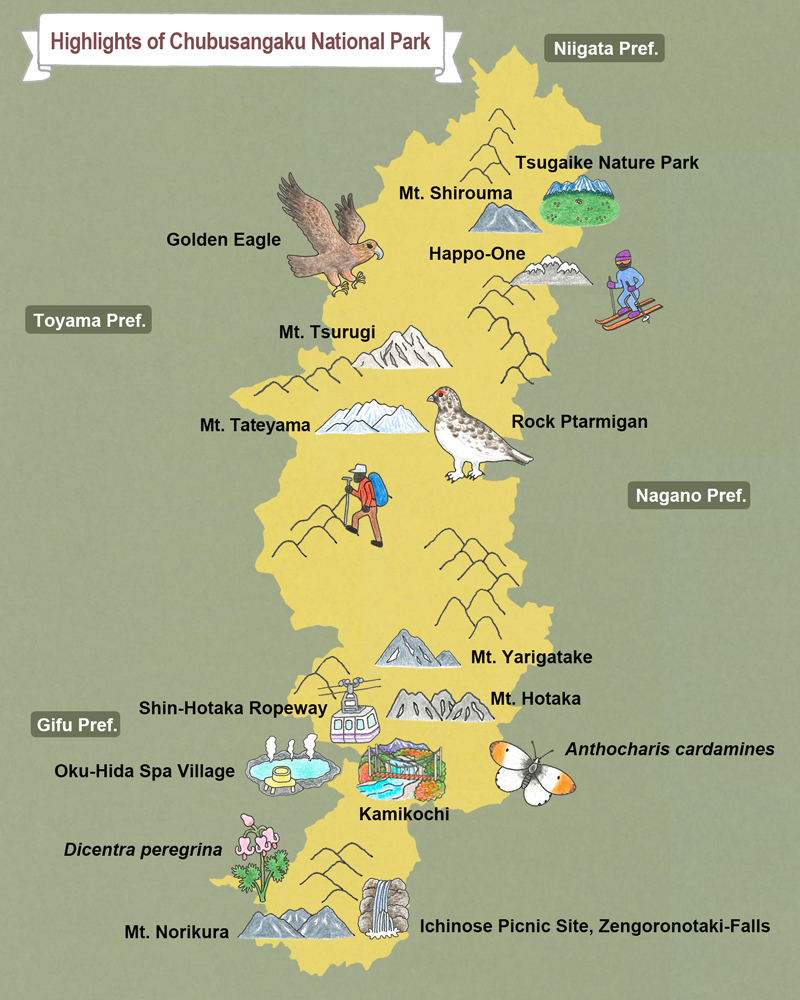- MOE
- National Parks of Japan
- Chubusangaku National Park
- Guide of Highlights
main body
Highlights of Chubusangaku National Park
Tsugaike Nature Park
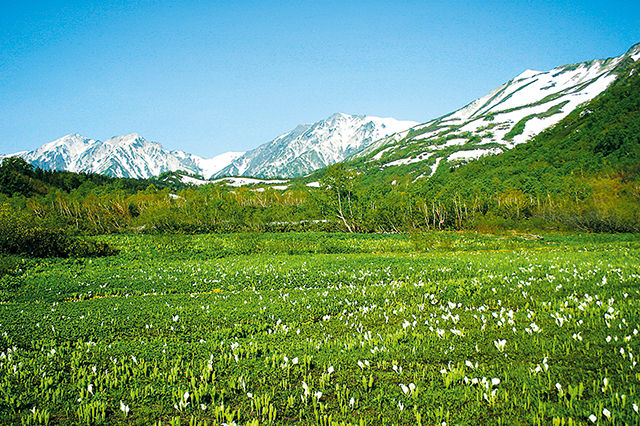
Tsugaike Nature Park
The high moor spreads at an altitude of 1,900 m above sea level. Enjoy the sights of gently blossoming skunk cabbage plants, large colonies of alpine plants, crimson foliage and other seasonal sceneries against the magnificent backdrop of the Hakuba Mountain Range.
Kurobe Gorge
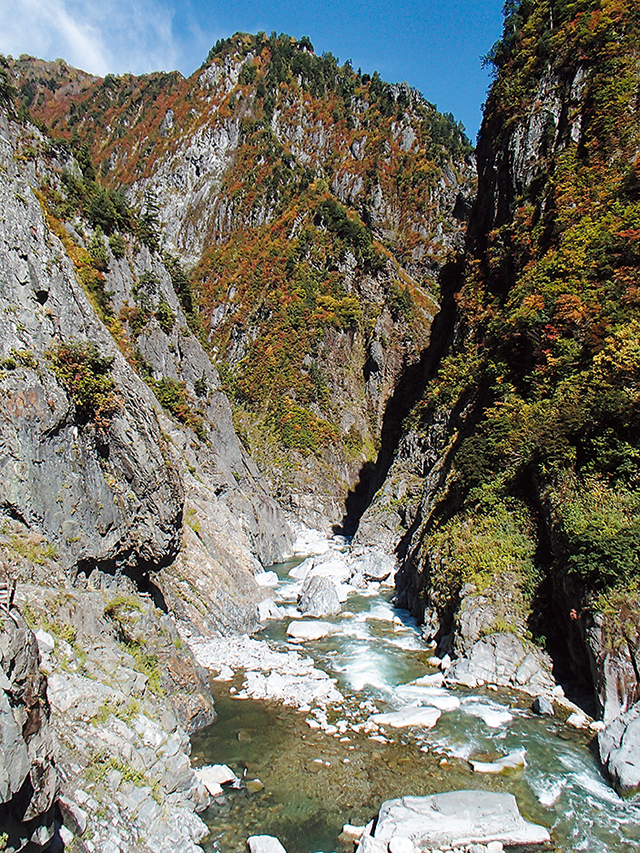
Kurobe Gorge
The Kurobe Gorge is one of Japan's famous gorges that separates the Tateyama Mountain Range and the Ushiro-Tateyama Mountain Range. Renowned for its deep V-shaped valley, the area abounds with aesthetic landscapes and onsens (hot springs). The scenic trolley runs from Unazuki to Keyakidaira along the gorge where visitors can savor impressive scenery.
Mt. Shirouma
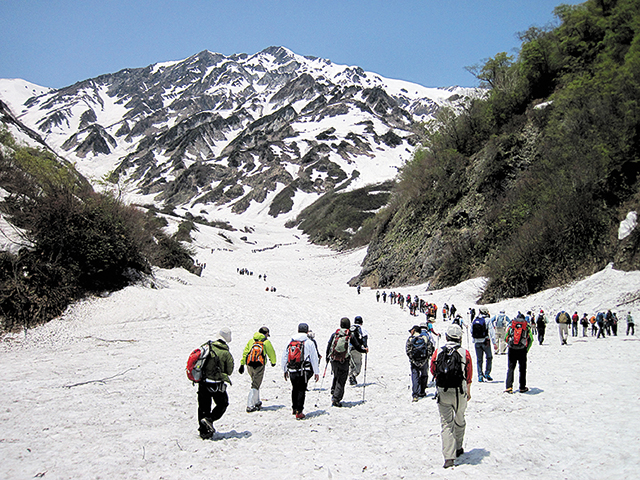
Mt. Shirouma
This is the highest summit among the Ushiro-Tateyama Mountain Range, and the Hakuba Daisekkei Gorge is considered Japan's largest snowy gorge. The area is famous as an important repository of various alpine plants and a forest of Japanese beech trees can be observed along the Hakuba Daisekkei Trail at the base. [ 2,932 m above sea level ]
Happo-One

Happo-One
The area along the Happo-One Nature Study Trail extending from Mt. Kurobishidaira to Happo Pond is a place to observe high moors and famous as an important repository of various alpine plants, such as lingonberry and alpine butterflies. A string of mountains rising 3,000 meters including the Hakuba-Sanzan Mountains and Mt. Goryu can be viewed up close.
Mt. Tsurugi
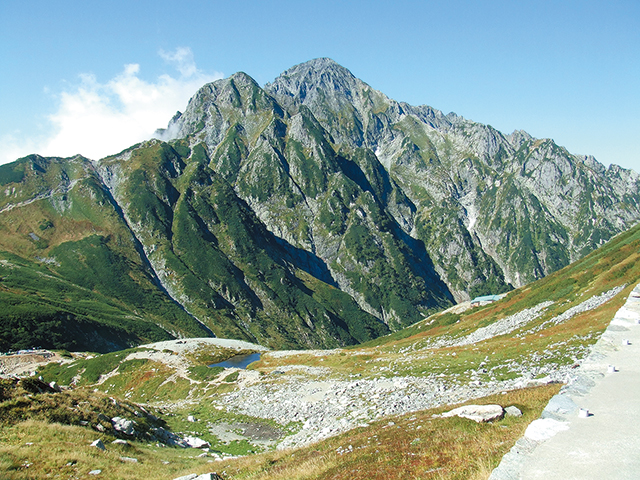
Mt. Tsurugi
Also called as a sanctuary of rocks and snow, this mountain is noted for its precipitous appearance influenced by glaciers. The mountain trails abound with many perilous passes, steep slopes with iron chains, and rock ridges, requiring climbers to have high skills and physical strength. [ 2,999 m above sea level ]
Mt. Tateyama
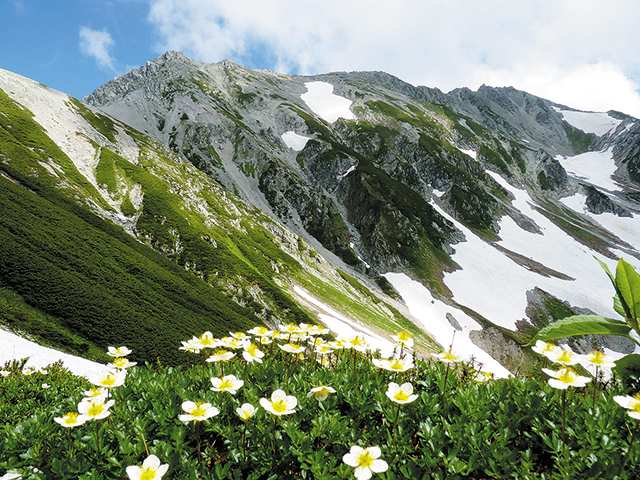
Mt. Tateyama
Known from ancient times as one of the three sacred mountains (together with Mt. Fuji and Mt. Hakusan). Comprised of the highest peak (Mt. Oonanji, 3,015 m above sea level), the main peak (Mt. Oyama), and Mt. Fujinooritate. The Oyama and Minemoto shrines at the peak of Mt. Oyama are visited by many devotees in summer.
Midagahara Plain
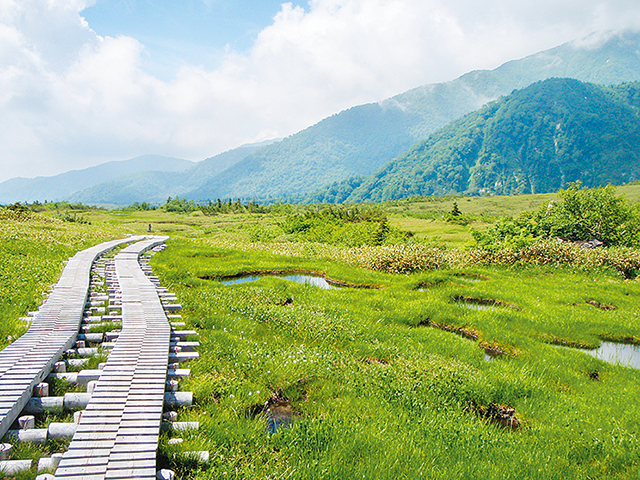
Midagahara Plain
This is a high moor that spreads across a lava plateau and is dotted with myriads of small ponds referred to as a field of pretas (Gaki). The wetlands are equipped with wooden footpaths where visitors can observe interesting varieties of alpine plants.
Mt. Yarigatake

Mt. Yarigatake
By the process of glaciation, the summit area became sharp and glacial troughs (U-shaped valleys) and cirques are formed. The shape of the mountain is reminiscent of the Matterhorn, a mountain of the Alps in Europe, making it an icon for many mountain climbers. [ 3,180 m above sea level ]
Mt. Hotaka

Mt. Hotaka
The Hotaka Mountains are a collective name for the peaks of Mt. Kita-Hotaka, Mt. Karasawa, Mt. Oku-Hotaka, and Mt. Mae-Hotaka with the Mt. Oku-Hotaka as the highest peak in the Northern Alps, standing at 3,190 m above sea level. Besides the overwhelming spectacle of sheer rocky cliffs, the area fascinates climbers with the seasonal allure of alpine plants, crimson foliage and snow and ice.
Kamikochi

Kamikochi
Rocky ridges of the Mt. Hotaka and riparian forests, coupled with picturesque streams of the Azusa River provide a spectacular scenery of gorge, attracting hordes of visitors. The Taisho Pond was formed by a volcanic activity of Mt. Yakedake thus banking up the Azusa River.
Oku-Hida Spa Village

Photo by Hirayu Spa Tourism Association
Oku-Hida Spa Village
Referred to collectively as the Oku-Hida Spa Village. Includes the five hot springs areas at Hirayu and Shin-Hotaka within the park, as well as Tochio, Fukuji, and Shin-Hirayu. Plentiful water from the hot springs, allowing outdoor bathing. May be used without charge, or with a small donation. Footbaths and public baths are also available.
Zengoronotaki-Falls

Zengoronotaki-Falls
A waterfall in the Norikura Highland of Matsumoto City in Nagano Prefecture. Mt. Norikura is visible from the top of the waterfall. Roads to the waterfall viewing platform are provided from the nearest prefectural highway. Since it faces east, rainbows are often seen in the morning sun.
Norikura Highland Ichinose Picnic Site
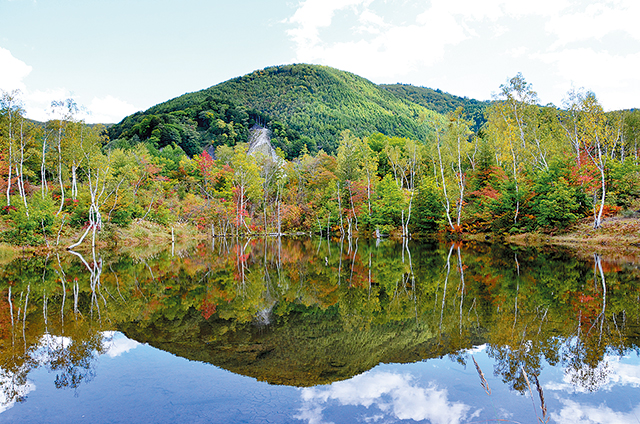
Norikura Highland Ichinose Picnic Site
Encircled by a forest of white birch trees, this grassland is home to clusters of Japanese azaleas and other seasonal marshland plants. The ponds that dot the area also feature a variety of flowering wetland species, including skunk cabbage and bog-bean plants. The Maimeno-ike Pond is famous for the inverted image of Mt. Norikura as reflected in the surface of a pond in the foreground.
Mt. Norikura
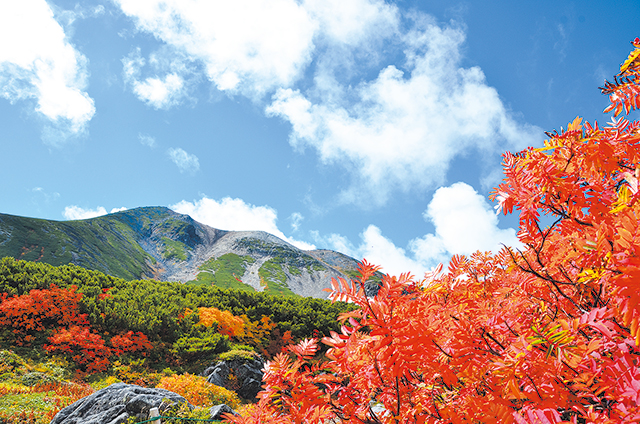
Mt. Norikura
With the tallest Mt. Kengamine rising 3,026 m above sea level, a chain of mountains extends from east to west at the foot. Visitors can use the Norikura Echo Line and Norikura Skyline to reach Tatamidaira situated at 2,700 m above sea level via public transportation. The scenery is fabulous, especially during the fall foliage season in late September to early October, when the mountains are ablaze with yellow Erman's birch and red Japanese Rowan trees, creating a splendid contrast with the green creeping pine trees. [ 3,026 m above sea level ]
Wildlife & Plants
Dicentra peregrina

Dicentra peregrina
Blooms on the gravel areas on the ridgelines of the high mountains. Known as the 'Princess of the Alpine plants.' The pink flower resembles the face of a horse when seen in side view. Therefore, in Japan it is called "komakusa" or "horse plant" and can be seen on the ridgelines of Mt. Norikura and Mt. Tsubakuro, etc. in the Northern Alps in July and August.
Anthocharis cardamines

Photo by Atsushi Maeda
Anthocharis cardamines
An alpine butterfly. Reached Japan when it was connected to the continent in the ice age, and subsequently moved to higher altitudes when the climate warmed. Found in Japan only in the Northern Alps, the Southern Alps, Mt. Myoko, Mt. Togakushi, and Mt. Yatsugatake.
Rock Ptarmigan (Lagopus mutus japonicus)

Rock Ptarmigan (Lagopus mutus japonicus)
Found only at high altitudes of the central region of the Northern Alps, etc. Designated as a National Special Natural Monuments. Deterioration of the environment of these habitats brings a fear of extinction of many populations.
Golden Eagle (Aquila chrysaetos japonica)
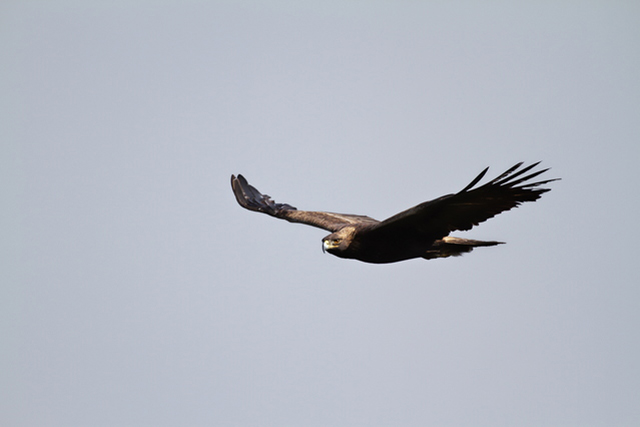
Golden Eagle (Aquila chrysaetos japonica)
A large bird of prey found in mountainous regions from Hokkaido to Kyushu. This park is characterized by a diverse natural environment and steep terrain, suited to the golden eagle in its position at the top of the ecological system.
Activities
Mountain Climbing

Mountain Climbing
A mountain park covering the Northern Alps. A wide variety of mountain scenery including chains of mountains over 3,000 m, valleys, fields of flowers, high moor, and snowy valleys, and plant and animal life. Attracts mountaineers in large numbers.
Shin-Hotaka Ropeway
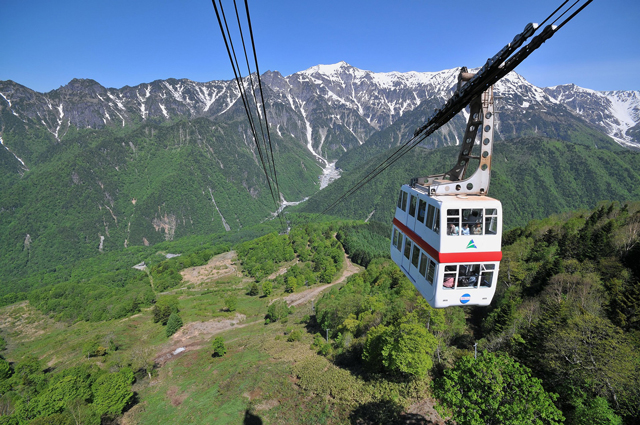
Photo by Okuhi Kankou Kaihatu Co., Ltd.
Shin-Hotaka Ropeway
A ropeway connecting Shin-Hotaka hot springs to Mt. Nishi-Hotaka. Used in climbing Mt. Nishi-Hotaka, and for access to the observation space on the roof of the Mt. Nishi-Hotaka terminus for superb views of the peaks of the Northern Alps.
Tateyama Kurobe Alpine Route
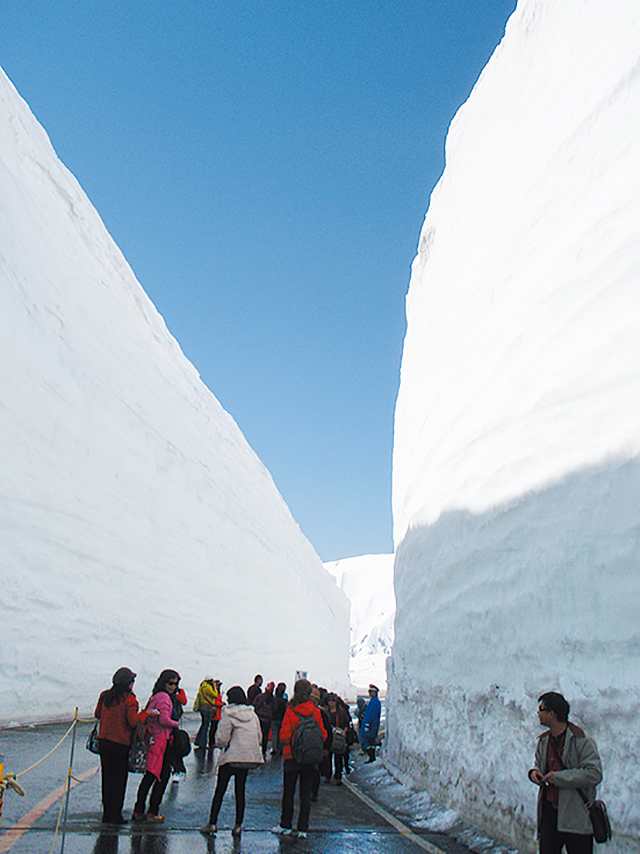
Tateyama Kurobe Alpine Route
This famous mountain sightseeing route connects Tateyama Station in Toyama Prefecture with Ogizawa, Omachi City, Nagano Prefecture via cable car, bus, trolley bus, ropeway and walking trail. The route is packed with must-see sights in the northern part of this national park such as Shomyo Waterfalls, Midagahara Plain, Murodo, Kurobe Dam and much more.
